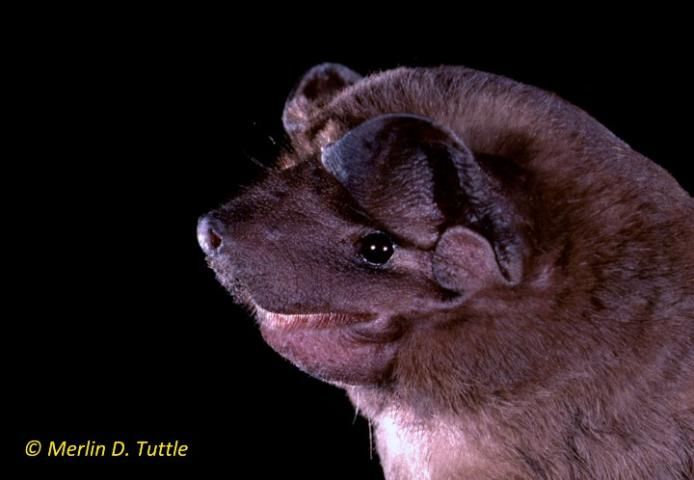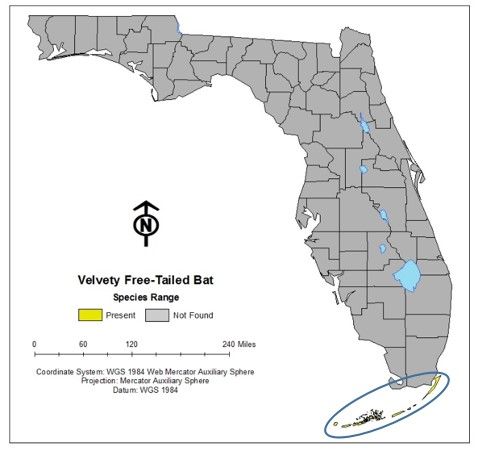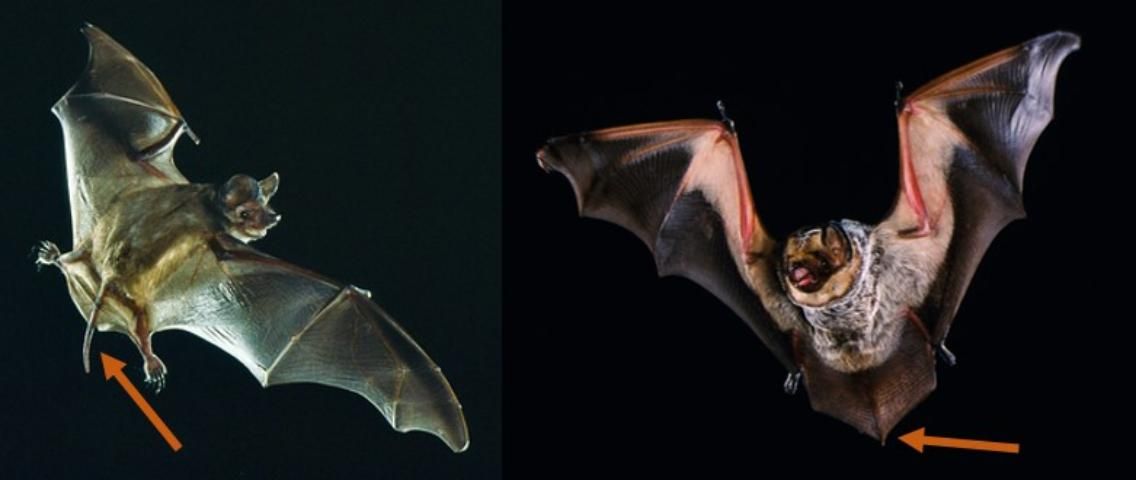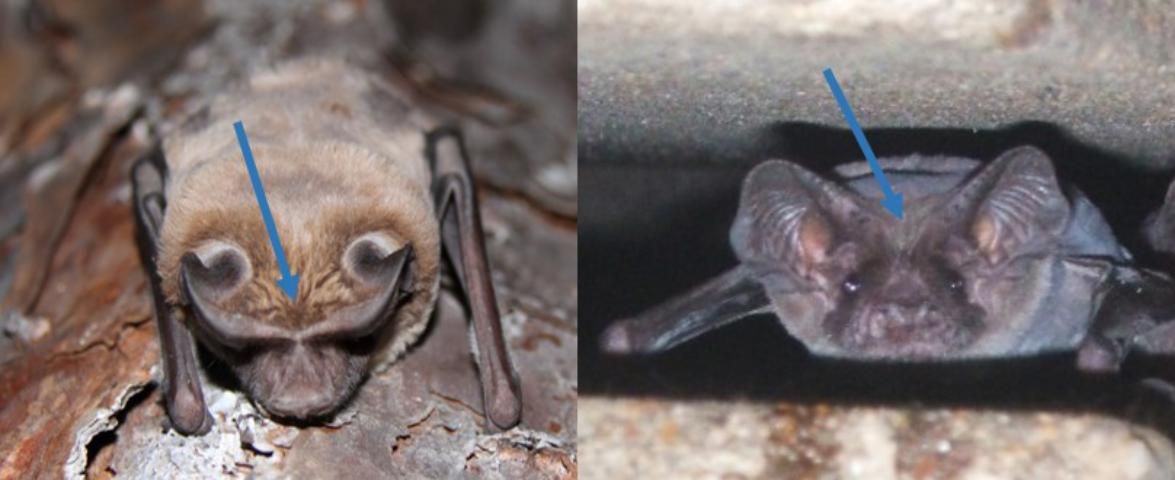The velvety free-tailed bat (Figure 1) is found nowhere in the United States but extreme south Florida. With a wingspan of 11 inches (270 cm), it is a medium-sized bat. The color of its thick fur varies from dark brown to dark gray.

Credit: Merlin Tuttle, Merlin Tuttle's Bat Conservation http://www.merlintuttle.com/
Found throughout the Greater and Lesser Antilles as well as much of Central and South America, the species has thus far been seen nowhere in the United States but the Florida Keys and Dry Tortugas (Figure 2). Their discovery in the United States was fairly recent: they were first found in the Florida Keys in the mid-1990s. There is some speculation they may occur in the Everglades region as well.

Credit: Emily Evans
Velvety free-tailed bats in the United States are known to roost (sleep during the day) only in man-made structures. They have been found roosting in attics, crawl spaces, crevices, and under eaves in groups of as many as 1,300 individuals. In Cuba they also roost in tree hollows and in holes in utility poles.
These bats emerge from their roosts earlier than most other bats, often shortly before sunset. They feed on insects at high altitudes. It is believed that their large, forward-facing ears are aerodynamically aligned to conserve energy during flight.
How do you know if you have found a velvety free-tailed bat?
First, check the rump to determine if a tail is visible. If you can see a tail more than an inch long (Figure 3), the bat is one of three species of free-tailed bats (in the family Molossidae).

Credit: Merlin Tuttle, Merlin Tuttle's Bat Conservation http://www.merlintuttle.com/
Read below to determine how to differentiate the three species of free-tailed bats found in Florida.
Velvety Free-Tailed Bat (Molossus molossus)
- Is found only in extreme south Florida (the Keys and perhaps the Everglades region)
- Typically roosts beneath roofs of man-made structures
- Roosts in the Keys in moderately-sized groups (50–300 individuals)
- Has ears that are not fully separated from one another (they are joined at the base; Figure 4)
- Each individual is about the size of a standard business card when it is at rest and its wings are folded

Credit: Kathleen Smith, FFWCC, used with permission; Elizabeth Braun de Torrez, UF/IFAS.
Brazilian Free-Tailed Bat (Tadarida brasiliensis)
- Is found throughout the entire state of Florida, except the Keys
- Often roosts during the day in man-made structures (attics, stadiums, bridges, and bat houses)
- Typically roosts in large congregations (1,000–500,000 individuals)
- Produces a musky odor that is noticeable from some distance away
- Has ears that are fully separated from one another (not joined at the base like velvety free-tailed or bonneted bat ears; Figure 4)
- Is about the size of a standard business card when it is at rest and its wings are folded
Florida Bonneted Bat (Eumops floridanus)
- Is found only in central and south Florida (as far north as Polk County)
- Roosts in pine tree cavities, palms, rock crevices, and man-made structures (beneath barrel tile roofs and in bat houses)
- Roosts in small groups (under 50 individuals)
- Has ears that are not fully separated from one another (they are joined at the base; Figure 4)
- Is the largest bat in Florida, about the size of a standard i-Phone when it is at rest and its wings are folded
Acknowledgement
This publication is funded in part by the Renewable Resources Extension Act (RREA).
Additional Information
Florida Fish and Wildlife Conservation Commission. Living with bats.
Marks, C. S., and G. E. Marks. Bats of Florida. 2006. University Press of Florida. Gainesville, Fl. 176 pp.
Ober, H. K., M. B. Main, and G. M. Allen. 2004. Bats of Florida. WEC186. Gainesville: University of Florida Institute of Food and Agricultural Sciences. https://edis.ifas.ufl.edu/UW203
Ober, H. K., and F. J. Mazzotti. 2008. Conservation of Bats in Florida. WEC247. Gainesville: University of Florida Institute of Food and Agricultural Sciences. https://edis.ifas.ufl.edu/UW291
Ober, H. K. 2008. Effective Bat Houses for Florida. WEC246. Gainesville: University of Florida Institute of Food and Agricultural Sciences. https://edis.ifas.ufl.edu/uw290
Ober, H. K. 2008. Insect Pest Management Services Provided by Bats. WEC245. Gainesville: University of Florida Institute of Food and Agricultural Sciences. http:/edis.ufl.edu/UW289
Wisely, S. M., and H. K. Ober. 2015. Facts about Wildlife Diseases: Rabies. WEC239. Gainesville: University of Florida Institute of Food and Agricultural Sciences. http:/edis.ufl.edu/UW282